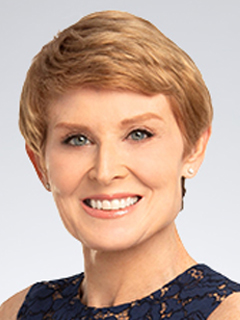Employment accelerates at year-end
Improvement reinforces Fed decision to pause.

January 10, 2025
Payroll employment rose by 256,00 in December, after a downwardly revised 212,000 in November. We generated 2.2 million jobs in 2024, the slowest pace since 2020, but still above 1.99 million in 2019. Brace yourself for significant downward revisions to payrolls in 2023 and early 2024 when benchmark revisions are released with the January employment report in early February.
The public sector added 33,000 new jobs, dominated by increases at the state and local levels. Non-education employment picked up, due to infrastructure projects and clean-up following massive hurricanes. Federal employment accounted for 6,000 of those jobs; losses in postal workers were offset by gains elsewhere.
Private sector job gains were concentrated in the service sector but broader based than much of the year. The Big 3 – state and local, healthcare and social assistance and leisure and hospitality – accounted for only 54.5% of total gains, the lowest share since May. That is welcome news as it could signal that job gains are becoming more dispersed.
Healthcare and social assistance added 69,500 new jobs, supported by aging demographics and the ongoing demand for care workers for children and seniors. Retail added 43, 400, buoyed by a shift in holiday hires from November to December. (We had a late start to the holiday shopping season this year.) Much of that was concentrated in clothing stores; spending on clothing picked up in some of the credit card usage data. That comes after a long hiatus. Even luxury brands were lifted; they had suffered from the push to trade down when inflation soared.
Leisure and hospitality added 43,000, mostly in food services and accommodation. Some 30.8 million people flew between December 21 and January 1, according to TSA; 107 million drove more than fifty miles, according to estimates by AAA.
Professional and business services added 28,000, the strongest since May. The gains were once again helped by hiring architectural, engineering and related services, which added 7,400 after contributing 12,400 jobs in November.
The goods sector lagged. Manufacturing shed 13,000 jobs. The largest losses occurred in semiconductors and motor vehicles and parts. That is despite a surge in vehicle sales in December, which reached their highest level since May 2022. Replacement demand due to the destruction triggered by recent hurricanes buoyed those gains and points to some rebound in production and hiring in the first quarter.
Construction employment rose 8,000 largely due to a warmer-than-usual December. Much of the repair and clean-up from hurricanes is ongoing: Congress added $100 billion in disaster aid to the continuing resolution before the holiday break. FEMA funds will be stressed again by the devastating fires in California, which will no doubt worsen the housing crisis in Los Angeles.
Average hourly earnings rose 0.3% and were up 3.9% from a year ago, slightly less than November. Wages accelerated in private education and health services, professional and business services, financial activities and construction. Those gains offset declines in mining and logging, retail, and transportation and warehousing. This is the first decline in transportation and warehousing wages since June 2022.
Average hours worked held at 34.3 hours per week. That pushed up average hourly earnings 3.9% from a year ago in December; they rose nearly 4% on an annual basis, slightly faster than the pace of the third quarter. That is the first quarter-to-quarter increase in weekly earnings since the first quarter of 2022 and one of many reasons the Federal Reserve opted to pause after cutting rates in December. Financial markets reduced their expectations for rate cuts this year from two in late December to one after this report.
Separately, the unemployment rate fell to 4.1% in December from 4.2% in November. Revisions to the seasonal adjustment of the data removed the 4.3% high we saw on the unemployment rate in July. The participation rate held at 62.5%. The ranks of the employed in the household survey jumped by 478,000, the largest increase since November 2023. That reflects a partial catch-up in the household survey, which has lagged the establishment survey much of the year.
The U-6, or stress measure of unemployment, which includes those marginally attached to the labor force and those who are forced to accept part-time when seeking full-time, ticked down to 7.5% in December. That is lower than the previous three months but still above the 7% in February 2020. The number of long-term unemployed fell to the lowest level since August.
The number of job leavers jumped to the third highest level since January 2022. That contrasts with the Job Openings and Labor Turnover survey for late November, which showed low quit, layoff and hiring rates. The Fed will be watching to see if that is a sustained shift, as it could add to the upward pressure on wages and inflation.
The total number of people out on vacation during the month, which was surveyed prior to the holiday break, was the highest on record for December. The data go back to 1976. That is another warning sign for the Fed, which is worried that the remarkable resilience of consumer spending, notably on services, could create a floor under inflation. That is before we see the potentially inflationary effects of shifts in trade and immigration policy.
The labor market ended the year on a high note, underscoring the remarkable resilience of consumer spending.

Diane Swonk
KPMG Chief Economist
Bottom Line
The labor market ended the year on a high note, underscoring the remarkable resilience of consumer spending. The improvement reinforced the Fed’s decision to pause rate cuts in January and wait and see how policy shifts could alter the trajectory on inflation. Our base case for the overall economic outlook in 2025 has two rate cuts in 2025; our alternative (more pessimistic) scenario on tariffs and curbs to immigration has only one, which may be a stretch to achieve.
Subscribe to insights from KPMG Economics
KPMG Economics distributes a wide selection of insight and analysis to help businesses make informed decisions.
Explore more

Employment rebounded in November
A December rate cut is a flip of a coin.

KPMG Economics
A source for unbiased economic intelligence to help improve strategic decision-making.

Turning Points: 2025 Annual Outlook
Deregulation could partially offset the drag from tariffs.
Meet our team
